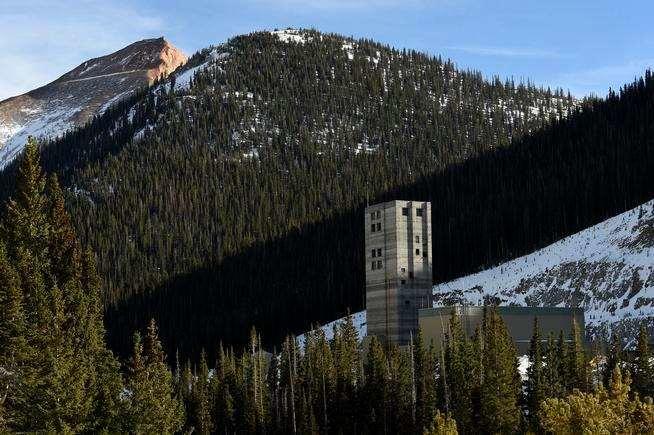Use of 1041 Regulations Case Study: Clear Creek County
Case Study: Clear Creek County
Population: 9,136 (U.S. Census Bureau, 2015)
Location: Eastern Slope of mountains along I-70
1041 Designations:
- Natural Hazard Areas
- Historical, Natural or Archaeological Resource Areas
- Areas around key facilities in which development may have a material effect upon the key facility or surrounding community
- Site Selection of Arterial Highways/Interchanges/Collector Highways
- Site Selection of Rapid/Mass Transit Facilities
- Site Selection/Construction of Major Facilities of a Public Utility
- Site Selection/Construction of Major New or Expanded Domestic Water and Sewage Treatment Systems
- Efficient Utilization of Municipal/Industrial Water Projects
- Site Selection/Development of New Communities
- Site Selection of Airports
Year of 1041 Adoption: 1976; Amended 1989, 1998, 2006, 2007, 2009, 2012
Number of Permits Approved since 1976: 15-20

1041 Story
Clear Creek County has a rich mining history, with gold and silver mining booming in the mid-1880s before busting in the 1930s (Clear Creek County, n.d.). Today, Clear Creek County attracts tourists and skiers, interstate travelers and outdoors enthusiasts, and is home to the Henderson molybdenum mine (Clear Creek County, n.d.). Through its history, mining has been a significant factor in the growth and development of the County. In 1976, the County was facing development pressure and grew concerned that residential development could interfere with mineral extraction in adverse ways. The County first adopted 1041s to help resolve the conflict between future mining and future development, to preserve their hard rock mineral resources and ensure that mineral interest holders could continue to access those resources, and to regulate development in natural hazard areas as well as environmentally sensitive areas. Clear Creek County has updated their regulations several times since 1976, to add designations, to clarify and strengthen the criteria for approval, and to respond to increased and changing development pressures.
Developing and Implementing their 1041s
The Board of County Commissioners adopted the 1041 Regulations and the updates over the years as a distinct set of guidelines and regulations. The County looked to other communities’ 1041 Regulations for guidance and borrowed the language from others’ 1041s that they knew had survived legal challenge.
In the mid-2000s, the County completed a zoning update to allow for the development of wind and solar energy facilities. Around the same time, they updated their 1041s to incorporate large wind and solar facilities as public utilities. Some residents were opposed to allowing such facilities because of potential adverse impacts to the natural environment. Residents were also concerned about noise pollution from wind facilities, so the County retained a noise control expert to help them respond to the community’s concerns with specific noise standards.
Some Key Features of Clear Creek County’s 1041s
The County’s 1041s are written to address not only the impacts of a proposed project, but the impacts of the construction of the project. Applicants must provide plans for vehicular circulation and detours, the impacts of circulation and detours on community members, and detail what time of day
construction will occur.
Clear Creek County allows applicants to request a FONSI evaluation during the pre-application process in order to get an early determination of the applicability of 1041 Regulations to a particular project (Clear Creek County, 2012)
Effectiveness of the 1041s for Regulating Development
Clear Creek County’s 1041s have given them a larger seat at the table when dealing with large-scale activities that are not otherwise applicable to local zoning authority. This has enabled the County to effectively review projects for potential impacts on its communities and neighborhoods and allows them to require additional information and considerations.
Their 1041s are also effective because their permit approval process is similar to the NEPA process, requiring much of the same documentation and information for review. For applicants such as CDOT, this has made Clear Creek’s permit process predictable and has helped reduce incomplete application submittals.
Advice | Tips | Strategies for Adopting 1041s from Clear Creek County
Before adopting 1041s, make sure you have identified clear goals and objectives for their use. Do not adopt 1041 Regulations for the sake of adopting them for their authority; ensure that the designations support your priorities and address development issues specific to your community. Be careful not to adopt designations in a way that might deter or prevent the types of development that you want to encourage or allow. Finally, make sure 1041s are the most appropriate regulatory tool for addressing your community’s needs; there could be more effective tools depending on the need.
Takeaways
Clear Creek County’s 1041s started out as a means to negotiate between mineral interest holders and their rights to access those minerals and the pressure to grow and develop. Over the years, their 1041s have evolved to incorporate more protections for the public’s benefit. Their 1041s have given them a voice and a seat at the table that has enabled them to negotiate with developers and agencies to ensure that their communities are not adversely impacted by large-scale projects. This is of particular importance to the County as CDOT continues to look for ways to address congestion issues along I-70 through the County. Without the highway activity designation, the County would have less negotiating power or authority to work with CDOT and ensure CDOT’s plans will not adversely impact Clear Creek County’s residents and economy.